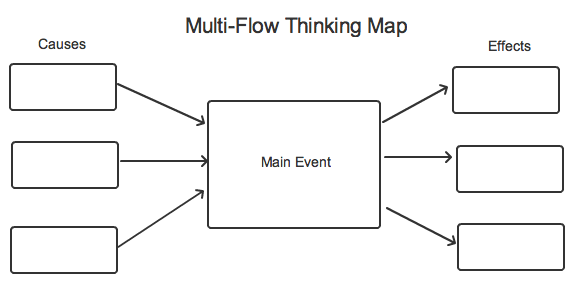Not, knowing they are being called Thinking Maps, I have used several in my class. I have use the flow chart, showing the steps or progressions or events of a war (pic 1), I have used one to show the how different branches in gov't are broken down in my gov't class (pic 2) and have used them for causes affects of reconstruction (pic 3). I do have to admit, that it's nice to see where I have already begun using some of these techniques in my room, long before truly realizing what they were.
On that same note, I have been doing quick writes as well. I typically use them as an exit ticket in class. I have used them from having the students write about the biggest news event from the previous year has impacted their lives to how would the current president handle a stock market crash similar to the one in 1929. Both of these times I used Padlet to let my students posts and reply on others to generate an online discussion between the students.


You're definitely right about terminology changing. I'm almost 35 and I don't remember using many of these thinking maps. I remember the bubble map, but I don't think I've used the double bubble map. Crazy!
ReplyDeleteYour idea of the exit ticket and using a "Quick Write" is great. I've been thinking of other closure activities when I get evaluated in a couple of weeks. I might use that! Thanks for sharing!
I agree with your terminology on these items. It seems not too long ago their were graphic organizers, but I do like the idea of thinking maps. I like using quick write as exit slips as well. I think it allows students to show their knowledge and explain it in their own way. It doesn't have to be anything long or super detailed, but just something to assess their understanding of the material being taught.
ReplyDeleteI agree with your terminology on these items. It seems not too long ago their were graphic organizers, but I do like the idea of thinking maps. I like using quick write as exit slips as well. I think it allows students to show their knowledge and explain it in their own way. It doesn't have to be anything long or super detailed, but just something to assess their understanding of the material being taught.
ReplyDeleteI have always referred to thinking maps as graphic organizers as well. I think the new terminology is more simplistic and is self explanatory in its function.
ReplyDeleteI enjoy using quick writes. I am not sure that my students appreciate them as much as I do :) I am the opposite of you though, I prefer to use them to start a lesson. I use it as an ice breaker or to get students ready and curious about what the daily lesson is going to be about. I like the idea of using the quick write as an exit ticket. I may have to switch things up a bit and try it out! Thanks for the ideas.
That is funny that you mentioning them being called Graphic Organizers. I think that is what they were called when I was in school. Also as I have told a bunch of others; the only "organizer" I was ever introduced to was the bubble map and possibly the double bubble. I love that there are so many other ones out there and they can be used for specific things too. For example the bridge map for contrast and comparison and also point of view activities; the flow chart as you said, integrated into lesson usage, and the brace map for allowing students to understand part to whole when trying to comprehend stories or cause and effect. Thank you for posting how you have been using them in your classroom and I hope you can find several others you will like to use as well.
ReplyDeleteI am super excited to hear that you are using these in class. Your kids will benefit because of your sound decision making.
ReplyDeleteI think it’s great that you are able to connect strategies that we are using in class to your real life classroom! I love the flow map and the cause and effect maps.
ReplyDelete